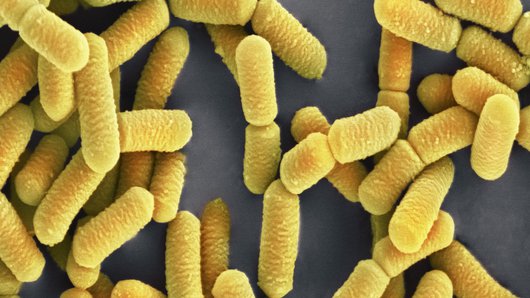Useful dung
ARTIS produces a huge amount of organic waste every day, like elephant manure. This manure is still full of different nutriens. This 'waste' is still very suitable to be re-used for other purposes.
 The invisible world
The invisible world
ARTIS produces a huge amount of organic waste every day, like elephant manure. This manure is still full of different nutriens. This 'waste' is still very suitable to be re-used for other purposes.
Microbiologist and head of Micropia Jasper Buikx tells you all about bokashi during this online edition of ‘The lab talks’.
Asian elephants produce some 100 kg of dung each day. This is not only because they eat a lot, but also because plants are difficult to digest. Mammals lack the cellulase enzyme, which is needed to break down vegetable matter (containing cellulose molecules, which do not decompose easily). They must instead rely on their intestinal microbes to do the job. Elephants have long intestines with a huge caecum. The latter acts as a kind of fermentation tank. Food stays here for an extended period of time, allowing the intestinal bacteria to extract as many nutrients as possible from the food.

Even so, more than half of what an elephant eats passes through undigested. Consequently, elephant dung is an incredibly energy-rich fertiliser, and it is a waste to just throw it away. ARTIS converts these large amounts of elephant dung and other organic waste materials into a soil improver for the zoo’s many garden borders. To do this, just like the elephant, ARTIS needs the help of microbes.

A mix of manure and plant residues is enriched with various microbes including lactic acid bacteria, streptomycetes, yeasts and moulds. These microbes are referred to as Effective Micro-organisms, or EM. Unlike conventional composting, this mixture is subsequently sealed airtight. This allows anaerobic (‘without oxygen’) fermentation to occur.

These effective microbes work together to ferment the elephant dung into ‘bokashi’ – a Japanese term for fermented organic material. In this process, useful metabolic products of the microbes are created, the energy in the end product is better preserved and less of the mixture is lost in the form of carbon dioxide (CO2), ammonia (NH3) or hydrogen sulfide (H2S). As a result, the whole has a higher nutritional value, just like with sauerkraut, for example.

The microbe-rich soil improver has several advantages. It has a detoxifying effect, is a good food source for soil life (mainly worms) and ensures faster availability of the absorbable nutrients for the plant. For example, ARTIS uses the soil improver in our edible garden. Once the elephant manure and plant waste has fermented for about eight weeks, the bokashi is added to the garden beds. This process ensures that our waste is converted into valuable raw materials, helping to close the sustainable loop.

In addition to elephant dung, bokashi can also be made from almost any other organic material. Want to try at home? The Micropia gift shop sells special bokashi buckets. However, you can also use any buckets or barrels you may have at home, providing they can be hermetically sealed. The effective microbe mix is also for sale in the Micropia gift shop.

Collect your vegetable, fruit or garden waste in a bucket, add the EM-mix and seal the bucket tightly. For best results, dilute the EM-mix and evenly spray over the organic waste with a garden spray bottle. Work in layers, as if you were making a lasagna: alternate each layer of organic waste with a layer of EM mix. These invisible helpers will ferment your organic waste into a rich soil for your own garden beds or balcony plants. Let the sealed bucket ferment for a few weeks, and – if you are using a bokashi bucket – make sure to regularly drain the fluid. Your own bokashi is now ready for use in the garden.
